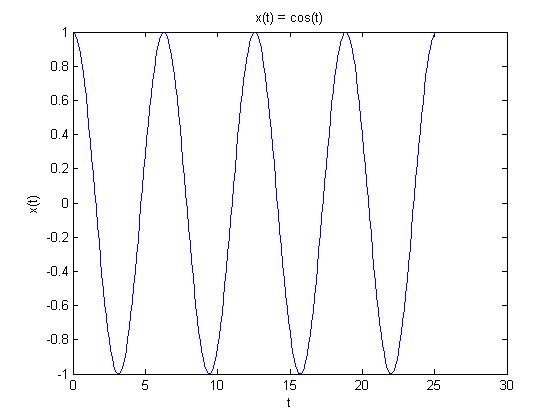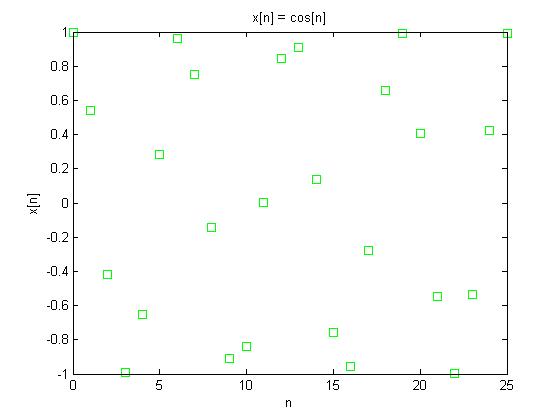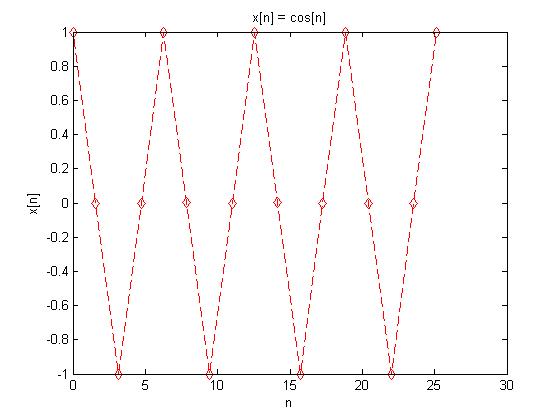Contents
[hide]Part A: Periodic Signals Revisited
Periodic Continuous Time Signal
I used the continuous time signal $ x(t) = cos(t) $, as it seemed many people used in Homework 1 for their example of a periodic function. The signal repeats itself at intervals of $ 2\pi $.
Non-Periodic Discrete Time Signal
Using the CT signal $ x(t) = cos(t) $ and converting it to the DT signal $ x[n] = cos[n] $ will create a non-periodic function when n is sampled at every integer.
Periodic Discrete Time Signal
In order to create a discrete time signal $ x[n] = cos[n] $ that was still periodic, the time interval couldn't be integers, as shown previously. Therefore, a time interval of $ \pi/2 $ was selected.




